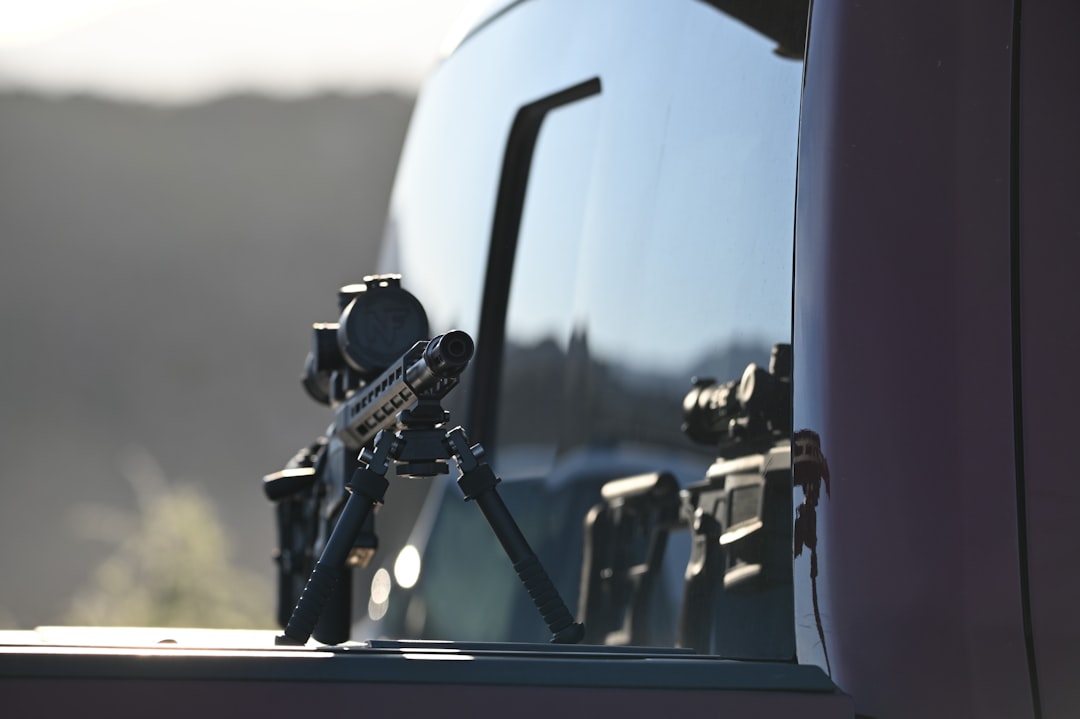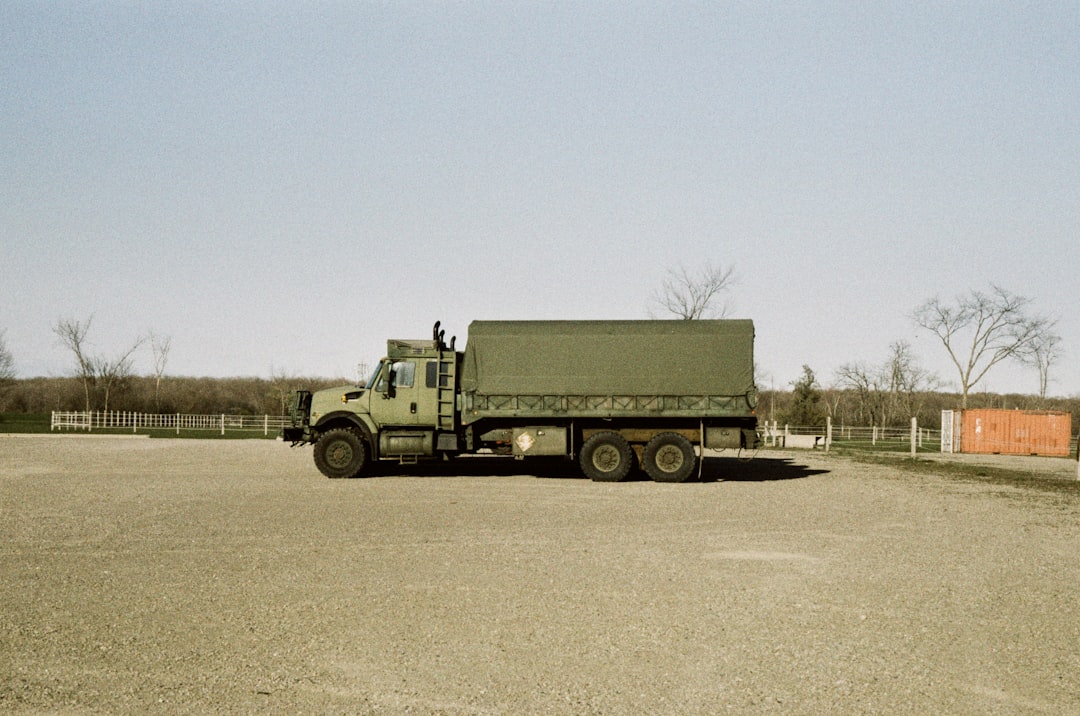

Engage prospects with a scan and streamline customer engagement with FREE QR code marketing tools by Sona – no strings attached!
Create a Free QR CodeFree consultation

No commitment

Engage prospects with a scan and streamline customer engagement with FREE QR code marketing tools by Sona – no strings attached!
Create a Free QR CodeFree consultation

No commitment
In today’s digitally driven world, QR codes have evolved from a novelty to a strategic tool that connects physical security operations to digital systems in real time. For armored transportation services, QR codes deliver secure, frictionless access to information while streamlining compliance and communications without requiring app downloads or complex setup. They turn each high-stakes moment into a trackable, auditable event that supports safety, efficiency, and customer trust.
Armored transportation companies are under increasing pressure to meet stringent security protocols, document every handoff, and give clients instant visibility into movements and status. Whether your team moves cash, precious metals, or high-value items, QR codes create a seamless bridge between the depot, vehicle, and client site. The result is less paperwork, fewer operational blind spots, and a stronger chain of custody backed by digital proof.
Manual, paper-driven processes are slow and error-prone. Missed signatures and incomplete logs jeopardize both accountability and compliance. By deploying QR workflows across entrances, vehicles, containers, and shipping documents, teams can automate identity checks, route confirmations, incident reporting, and audit trails. This reduces risk, increases transparency, and provides leadership with the data needed to optimize routes, training, and resource allocation.

Operational blind spots remain a persistent issue in armored transportation where missed scans or incomplete logs can result in lost accountability and increased risk exposure. QR codes close the gap between physical touchpoints and digital outcomes by turning routine actions into timestamped events. When every access attempt, pickup, and handoff creates a digital record, teams gain the visibility needed to enforce protocols and improve operations.
Paper forms, printed manifests, and manual sign-offs introduce delays and ambiguities. A QR-enabled workflow can require staff to scan at entry gates, unlock digital manifests, or acknowledge SOP changes before beginning a route. This not only accelerates processing times but also ensures compliance steps are followed and recorded. With Sona QR, you can trigger actions, route data to the right systems, and create an audit trail viewable by operations leaders and compliance officers.
Legacy processes like route sheets and paper visitor logs leave gaps that create risk. QR codes replace those gaps with instant digital verification, automated notifications, and clear audit trails. Over time, this digital transformation improves productivity, elevates service quality, and strengthens your security posture across the entire armored transportation ecosystem.

Armored transportation is a high-stakes environment where incomplete documentation or untracked movements can lead to compliance violations, asset loss, or reputational harm. QR codes solve these challenges by connecting every physical action to a digital footprint. Each scan records a unique event, enabling a clear chain of custody and providing leadership with the operational insight needed to take decisive action.
Teams gain speed without compromising safety. Guards can confirm pickups and deliveries in seconds. Clients can instantly access digital manifests or sign electronically. Supervisors can update procedures centrally using dynamic QR codes in marketing, ensuring that only the most current guidance is visible on-site. Every scan becomes a safeguard and a data point.
In practice, QR codes add clarity and control across materials commonly used in the industry. Appointment cards for client facility access can direct to a pre-registration form. Cargo labels on cash bags and safes can link to chain-of-custody checklists. Vehicle signage inside a cab can surface route changes or hazard notices. Dispatcher handouts can embed QR links to digital manifests, making real-time updates possible without reprinting.

Different moments call for different QR formats. In armored transportation, the priority is secure, rapid access to information paired with strong traceability. Selecting the right format ensures your teams and clients get exactly what they need with minimal friction.
Forms and secure web links are the workhorses in this environment. Use forms for incident reports, delivery confirmations, and inspections. Use web links for dynamic SOPs, manifests, and client dashboards. For communication, vCards and pre-filled emails or SMS messages streamline contact and escalation, reducing response time during critical events.
Dynamic QR codes are the preferred choice for most operational scenarios because they allow updates without reprinting and provide detailed tracking. Use static codes for stable destinations like a general help page or a public information notice that rarely changes.
Growth in armored transportation hinges on trust, responsiveness, and documented excellence. Many opportunities are lost when high-value offline interactions are not captured digitally. QR codes turn these moments into measurable signals that drive operational improvement, customer satisfaction, and new business.
Start by mapping the physical places and processes where your teams and clients already interact. From facility entrances to containers and manifests, inserting QR codes at the point of action makes it effortless to check in, verify, or escalate. The more consistent your placements, the more reliable your data and the easier it is to identify trends across routes, shifts, and sites. Similar public transit transformations show how standardizing scans boosts reliability.
By structuring these touchpoints, you build a unified dataset that reveals process gaps, training needs, and customer insights. You also create a differentiator that is easy to demonstrate during sales conversations and compliance audits.

QR codes shine when they directly address pain points that slow operations or obscure accountability. Focus on use cases where a scan can reliably trigger an action, capture data, or surface critical information. The best implementations are simple to use, fast to scan, and designed for the specific conditions your teams face in the field.
Activation moments should be intentional. A door badge scan should both confirm identity and log entry. A container label scan should both validate the seal and capture the handoff with a signature or PIN. A dispatch receipt scan should both collect feedback and notify the account team of any issues. Each use case is a small but powerful link in an end-to-end digital chain.
Successful teams document outcomes for each use case such as a reduction in check-in times, fewer custody discrepancies, and faster incident response. Over time, you can quantify performance improvements and tie them to client satisfaction scores and contract renewals.
Every scan is a signal that reveals intent, context, and urgency. In armored transportation, these signals help distinguish operational roles, client types, and service needs. By assigning unique codes to different actions and touchpoints, you build segmented audiences that sales, service, and compliance teams can engage more effectively.
Think beyond marketing and apply segmentation across the service lifecycle. For example, a bank branch manager scanning a service brochure at a trade show signals early-stage interest in cash logistics. A retail client scanning a claims form after a delivery signals post-service support. A regulator scanning a vehicle signage code signals a verification touchpoint. Each of these can trigger different follow-up sequences, alerts, or content.
Role-based segmentation is especially valuable in armored transportation because buying committees are complex and operational contexts vary widely. Using QR code data, your team can tailor training invites to guards, contract options to procurement, and best-practice content to security leads.
Armored transportation buyers still rely on face-to-face meetings, printed proposals, and on-site walk-throughs. QR codes make these physical moments measurable and actionable. By embedding scannable touchpoints across your materials and environments, you connect interest to digital experiences, capture intent data, and reduce friction throughout the journey.
A unified QR strategy also ensures consistent messaging. From a brochure left at a bank branch to a security placard inside a vehicle, every scan can route users to updated content and collect context that informs your next move. With a centralized platform like Sona QR, you can manage destinations, track performance, and sync data across channels.
This connected approach transforms offline engagement into measurable digital journeys. It also protects brand integrity since dynamic QR codes let you update content quickly when regulations, routes, or offerings change.
Getting started with QR codes in armored transportation is easier when you follow a repeatable playbook. The goal is to align each code with a clear operational or commercial outcome, design for real-world conditions, and measure performance so you can continually improve. Beginning with a single, high-impact use case builds momentum and makes change management smoother for frontline teams.
Before launching, define ownership: operations will steward process design and compliance, while marketing or IT may manage content and integrations. Decide which systems need to receive scan data such as access control, CRM, or incident management tools. With roles, destinations, and data flows clarified, you can scale confidently across vehicles, depots, and client sites.
Start with a problem that is felt daily and has a clear business impact. Facility access delays, custody logging gaps, and slow incident reporting are common candidates. Engage frontline staff to validate where a scan would save time or reduce confusion, and document the desired outcome so you can measure success.
Choosing the right code determines your flexibility and tracking depth. Static codes are fine for stable destinations but dynamic codes are best for operations in motion. They enable edits without reprinting and provide granular analytics through platforms like Sona QR.
Design for scannability and clarity. Codes should be large enough for the environment, have sufficient contrast, and include a concise call to action. Test under real conditions: low light, glare on armored glass, gloves, and rapid movement.
Place QR codes where they will be used, not where they look best. High-risk access points, container seals, dispatch paperwork, and in-cab placards are practical placements. Train staff on purpose and process so adoption is consistent.
Measurement turns QR codes into a strategic capability. Monitor scan volume, conversion rates, and time to completion. Use dashboards to compare performance by site, shift, or route. Iterate based on what the data reveals.
Visibility into every scan, movement, and access is essential in armored transportation. Paper logs and siloed systems conceal risks and opportunities, making it difficult to prove compliance or demonstrate value to clients. A modern QR platform gives you end-to-end insight so you can respond faster, optimize processes, and connect engagement to commercial outcomes.
Sona QR and Sona.com combine operational telemetry with business attribution. You can see which depots, routes, or clients interact most, which materials drive actions, and how those actions translate into pipeline and retention. For measurement frameworks, read Sona’s blog post The Essential Guide to Offline Attribution: Maximizing ROI Through Offline Channels. This level of clarity enables smarter staffing, targeted training, and more effective account management.
By unifying fragmented touchpoints, you create a continuous view of buyer and operator behavior from first scan to contract renewal. This not only strengthens compliance and safety but also proves the business impact of your operational excellence.
The most effective QR programs are simple to use, easy to measure, and directly aligned with mission-critical outcomes. Focus on clarity, training, and tight integration with your existing tools. Make sure every code has a clear value proposition so people understand what they get by scanning.
Small design and process changes can have outsize impact. Increasing code size on vehicle dashboards improves scan rates in low light. Moving an incident QR from the glove compartment to the sun visor increases reporting compliance. Pairing each code with a brief, benefit-driven call to action drives adoption and data quality.
Creative deployments include QR codes on tamper-evident labels that reveal a verification form when scanned, or QR codes on invoices that let clients approve route changes or request a claims evaluation. Each example removes friction and increases trust while adding measurable data to your systems.

Forward-thinking armored transportation companies are using QR codes to close workflow gaps and elevate service quality. The most successful implementations start with high-frequency, high-impact tasks like access control, custody verification, and incident reporting. Over time, these teams expand into client communications, training, and marketing. For a quick overview, watch this video case study.
These examples illustrate what is possible when scanning becomes a normal part of secure operations. They also show how small changes can deliver big improvements in accuracy, speed, and accountability across complex logistics networks.
Use these as a springboard for your own initiatives. Identify one or two processes where missed scans or outdated documents cause recurring headaches. Then pilot a QR solution that replaces ambiguity with instant, measurable action.
Success with QR codes in armored transportation depends on designing for real-world conditions and maintaining clear governance. Teams should balance accessibility with security controls, ensuring only authorized users can complete sensitive actions. Dynamic codes, short forms, and clear labels go a long way in boosting scan rates and data quality.
Beware of pitfalls that undermine adoption. Codes that are too small, poorly contrasted, or placed in awkward locations will not be scanned reliably. Static codes that link to outdated documents create confusion. Lack of training leads to inconsistent usage and incomplete records. Solve these issues upfront with thoughtful design and ongoing education.
QR codes are more than a shortcut for armored transportation services. They are a strategic asset that turns every interaction into a signal you can measure and act on. With consistent deployment and governance, you will create a self-improving system that strengthens security and service quality over time.
QR codes are more than a convenience. They are a strategy for transforming armored transportation operations into a connected, measurable system. By turning doors, containers, manifests, and receipts into smart entry points, you create real-time visibility and a defensible chain of custody that builds client trust and supports growth.
Here is what QR-enabled workflows deliver when implemented thoughtfully and at scale:
With Sona QR, you can generate secure dynamic codes, manage destinations, and capture detailed analytics all in one platform. Sona.com connects these real-world interactions to business outcomes through identity resolution and multi-touch attribution so you can see how scans contribute to pipeline and retention. For measurement principles, see Sona’s blog post The Importance of Accurate Revenue Attribution. Start creating QR codes for free: Start creating QR codes for free.
QR codes have revolutionized armored transportation services by transforming security protocols and access control into seamless, trackable interactions. From enhancing operational efficiency to ensuring authorized access with precision, QR codes streamline processes that were once cumbersome and vulnerable. Imagine instantly verifying personnel credentials at multiple checkpoints, reducing delays, and maintaining airtight security—all while capturing real-time data to optimize routes and resource allocation.
With Sona QR, you gain the ability to create dynamic, trackable QR codes that update instantly without the need for reprinting, enabling swift adaptations to security measures or access permissions. Every scan is a data point that helps you monitor access patterns, enhance accountability, and prevent unauthorized entry, turning routine checks into powerful security insights. Start for free with Sona QR today and elevate your armored transportation operations with smarter, safer, and more responsive access management.
Armored transportation companies provide secure movement and custody of cash, precious metals, and high-value items while ensuring compliance and accountability through documentation and chain-of-custody tracking.
The industry ensures security by implementing stringent security protocols, documenting every handoff, using tamper-evident labels, and deploying digital tools like QR codes to create trackable, auditable events and a strong chain of custody.
The armored transportation services market is growing as companies adopt digital workflows like QR codes that increase transparency, efficiency, and compliance, enabling new business opportunities and improved customer satisfaction.
Digital technology, especially QR codes, has transformed armored transportation by digitizing physical touchpoints, automating identity checks, enabling real-time tracking, reducing paperwork, and providing actionable data for operational and commercial improvements.
While the article does not list specific companies, key players utilize technologies like Sona QR to generate dynamic QR codes, manage secure workflows, and connect operational data to business outcomes.
Use Sona QR's trackable codes to improve customer acquisition and engagement today.
Create Your FREE Trackable QR Code in SecondsJoin results-focused teams combining Sona Platform automation with advanced Google Ads strategies to scale lead generation

Connect your existing CRM

Free Account Enrichment

No setup fees
No commitment required

Free consultation

Get a custom Google Ads roadmap for your business






Launch campaigns that generate qualified leads in 30 days or less.
